The MOST IMPORTANT Kitchen Tool
I’m not talking your favorite kitchen tool. MOST IMPORTANT is the issue. In researching what professional chefs and cooks had to say on this subject, I found the answers were almost 100% unanimous—a reliable kitchen thermometer!
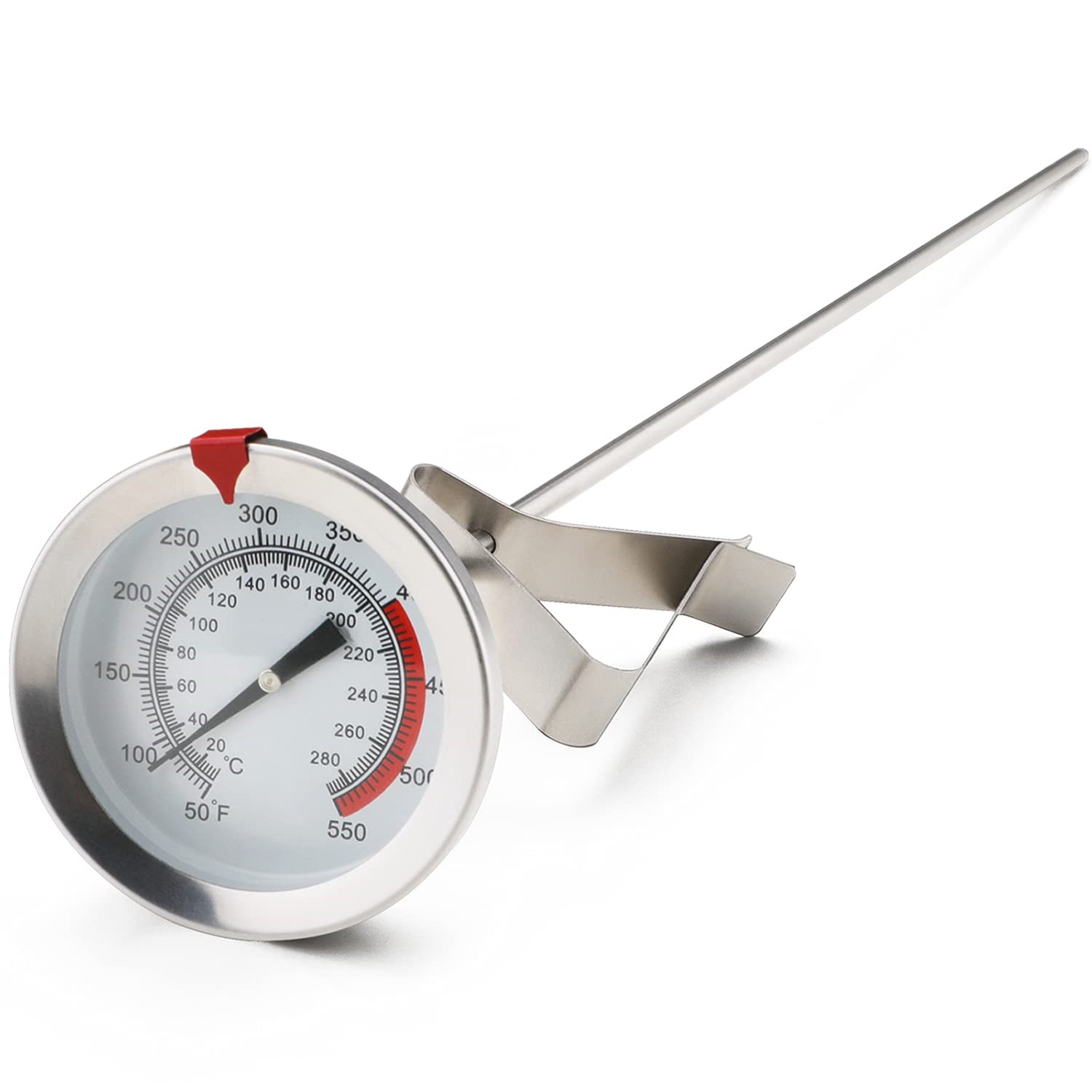
At least when it comes to health and safety, this is the pros FIRST choice. Interestingly, a few polls show this is the one tool most folks don’t have. I didn’t have one either, until my professional chef-son, Paul, brought me one when he came for Thanksgiving a few years ago.
It didn’t take too many uses to discover how much nicer and easier it is not to have to guess as to whether something is “done” or not.
According to the Center for Disease Control and Prevention, millions of Americans become ill due to food-born pathogens every year. And we’re not just talking about an upset stomach—thousands die each year from them, the CDC says.
According to professional chefs and food safety experts, if you routinely make food for anyone with a compromised or weakened immune system (the chronically or terminally ill, the elderly, or children), it’s even more vital to be sure your cooked foods are as safe as possible.

One professional chef I researched, Matt Degan of www.iwanttocook.com, says two of the biggest factors contributing to food-born illnesses are cross-contamination and not cooking meats, poultry and fish to a safe temperature. This is common and can be controlled by thoroughly cleaning and sanitizing surfaces and tools that have touched raw meat, poultry and fish. The second is where the thermometer comes in.
Not only did I not know for sure exactly when my meat was “done,” I really struggled when attempting to cook a steak to a certain degree of doneness, such as medium-rare. Actually, that is an effort in futility without a thermometer.
Kitchen thermometers come in two popular forms: One with a dial gauge, and another with a digital gauge (batteries required). The digital version is popular because the tally comes usually in a few seconds. Dial versions, called “instant-read” thermometers, can be anything but instant. And when you’re crouched over an oven with a prong in the chicken, all that heat from the oven is going bye-bye.
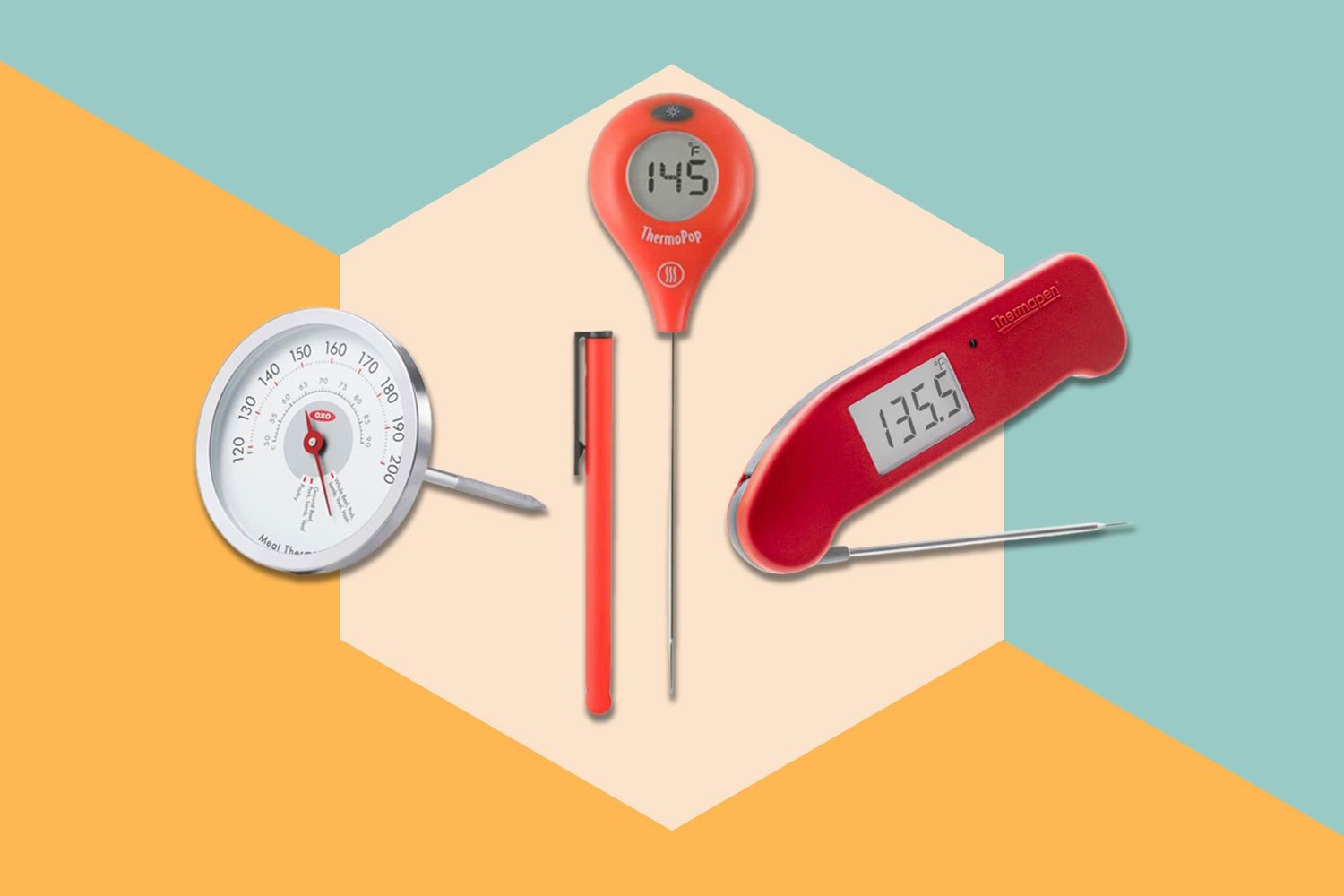
You can find a good basic digital thermometer for $15 or less—www.amazon.com being a favorite source. But fancier versions indicate when a certain temperature is reached, such as 145 degrees for a medium-rare steak.
Whether digital or gauge, the thermometer is inserted into the food to be tested; it stays inserted until the readout stabilizes. Be sure to insert the probe into the thickest part of the meat, and avoid hitting a bone, which can register a higher temperature than the surrounding meat.
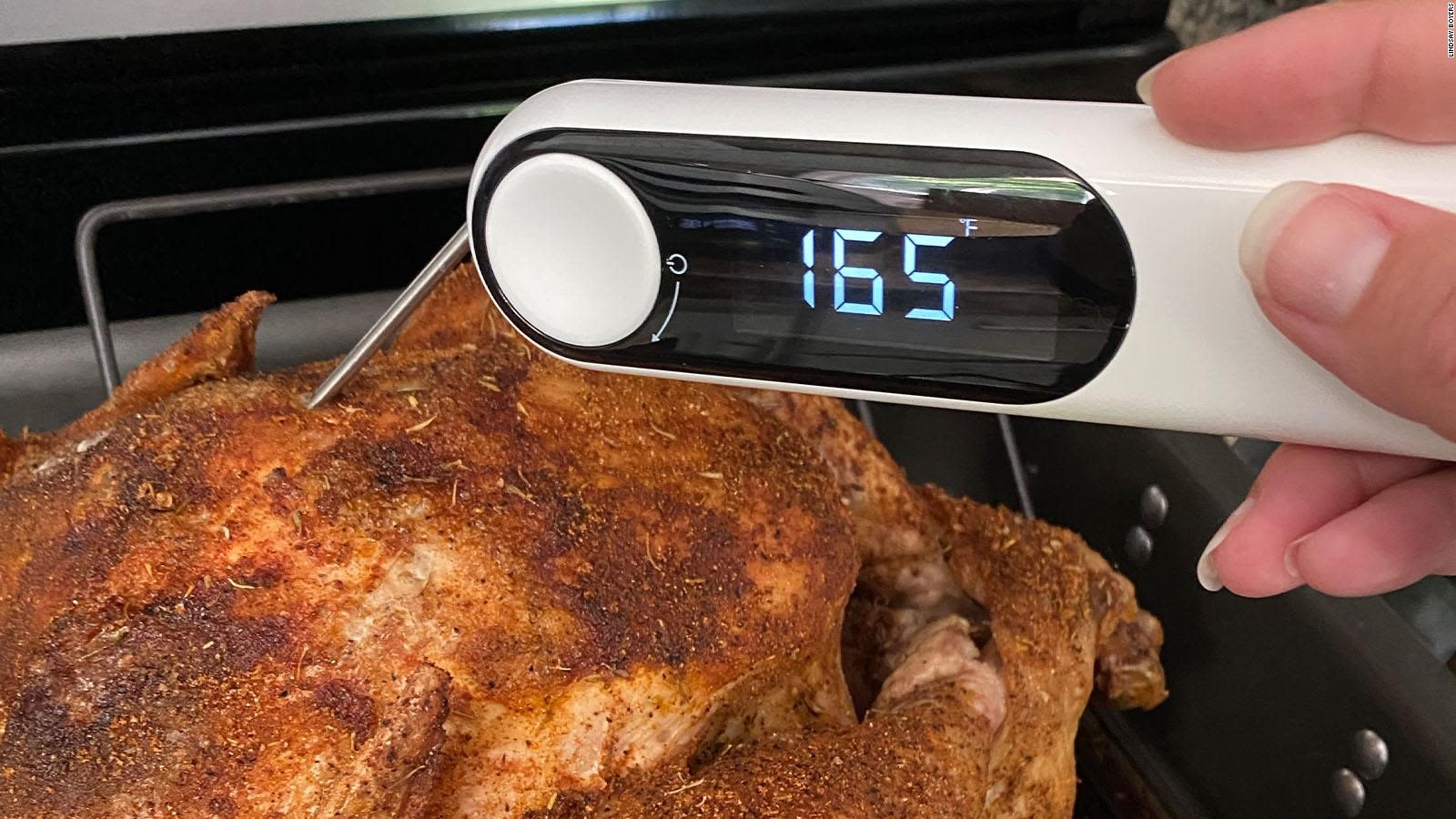
The temperature range to be most aware of is 40°F to 140°F. The USDA says this is the “danger zone,” the range where bacteria grow most rapidly. They advise taking this range seriously because bacteria can double in as little as 20 minutes between those temperatures.
Additionally, that’s why the Meat and Poultry Hotline says to never leave food out of refrigeration over 2 hours. And if temperatures are above 90 °F, food should not be left out more than 1 hour.
For our protection, the USDA shares recommended minimum cooking temperatures:
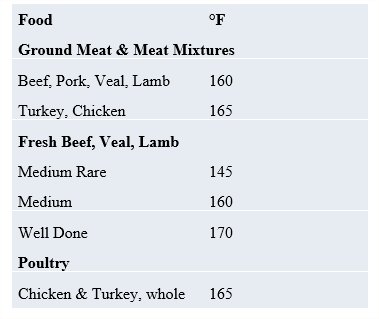
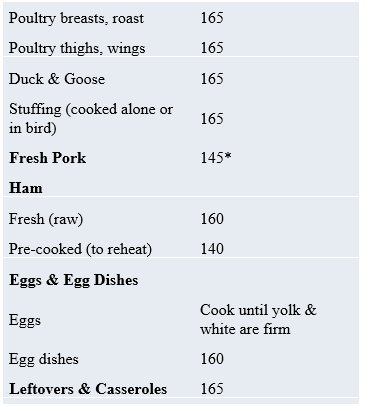
Back to the I Want to Cook website, Matt added some important information to the chart above. “Missing from this list is fish (including shellfish). The USDA’s recommended minimum cooking temperature for this category is 145°F. You might also notice there’s no listing for rare beef steak. If you like really like yours rare, cook until the minimum internal temperature reaches 135°F. But be aware the meat is still technically in the ‘danger zone’ at that temperature.
Also, be sure to let all meats “rest” a few minutes (under a foil tent) before diving in, so the juices can reabsorb.
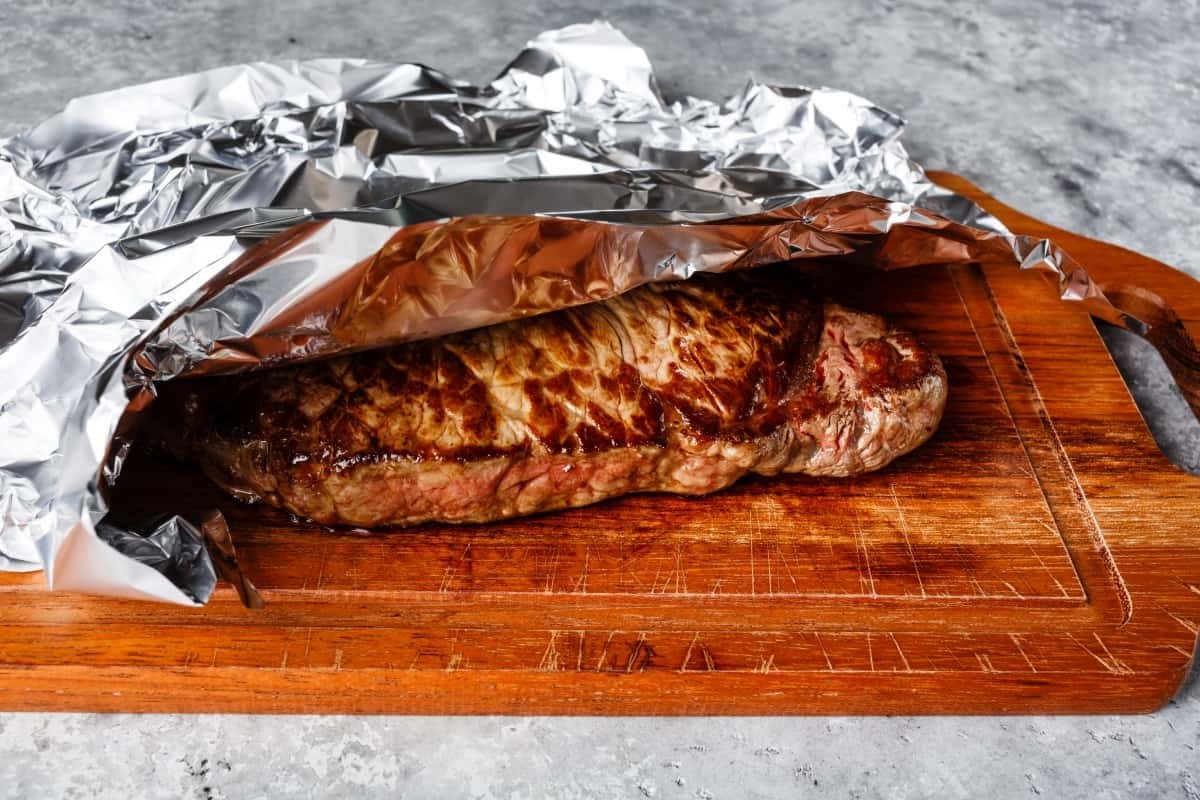
Finally, if you’d like to know more about safe meat-cooking, the USDA’s Food Safety and Inspection Service offers a free online brochure called Is it Done Yet? (https://www.fsis.usda.gov/news-events/publications/it-done-yet-brochure). Now that you know what the most important tool in the kitchen is, get yourself one and enjoy putting it to use.

At least when it comes to health and safety, this is the pros FIRST choice. Interestingly, a few polls show this is the one tool most folks don’t have. I didn’t have one either, until my professional chef-son, Paul, brought me one when he came for Thanksgiving a few years ago.
It didn’t take too many uses to discover how much nicer and easier it is not to have to guess as to whether something is “done” or not.
According to the Center for Disease Control and Prevention, millions of Americans become ill due to food-born pathogens every year. And we’re not just talking about an upset stomach—thousands die each year from them, the CDC says.
According to professional chefs and food safety experts, if you routinely make food for anyone with a compromised or weakened immune system (the chronically or terminally ill, the elderly, or children), it’s even more vital to be sure your cooked foods are as safe as possible.

One professional chef I researched, Matt Degan of www.iwanttocook.com, says two of the biggest factors contributing to food-born illnesses are cross-contamination and not cooking meats, poultry and fish to a safe temperature. This is common and can be controlled by thoroughly cleaning and sanitizing surfaces and tools that have touched raw meat, poultry and fish. The second is where the thermometer comes in.
Not only did I not know for sure exactly when my meat was “done,” I really struggled when attempting to cook a steak to a certain degree of doneness, such as medium-rare. Actually, that is an effort in futility without a thermometer.
Kitchen thermometers come in two popular forms: One with a dial gauge, and another with a digital gauge (batteries required). The digital version is popular because the tally comes usually in a few seconds. Dial versions, called “instant-read” thermometers, can be anything but instant. And when you’re crouched over an oven with a prong in the chicken, all that heat from the oven is going bye-bye.

You can find a good basic digital thermometer for $15 or less—www.amazon.com being a favorite source. But fancier versions indicate when a certain temperature is reached, such as 145 degrees for a medium-rare steak.
Whether digital or gauge, the thermometer is inserted into the food to be tested; it stays inserted until the readout stabilizes. Be sure to insert the probe into the thickest part of the meat, and avoid hitting a bone, which can register a higher temperature than the surrounding meat.

The temperature range to be most aware of is 40°F to 140°F. The USDA says this is the “danger zone,” the range where bacteria grow most rapidly. They advise taking this range seriously because bacteria can double in as little as 20 minutes between those temperatures.
Additionally, that’s why the Meat and Poultry Hotline says to never leave food out of refrigeration over 2 hours. And if temperatures are above 90 °F, food should not be left out more than 1 hour.
For our protection, the USDA shares recommended minimum cooking temperatures:


Back to the I Want to Cook website, Matt added some important information to the chart above. “Missing from this list is fish (including shellfish). The USDA’s recommended minimum cooking temperature for this category is 145°F. You might also notice there’s no listing for rare beef steak. If you like really like yours rare, cook until the minimum internal temperature reaches 135°F. But be aware the meat is still technically in the ‘danger zone’ at that temperature.
Also, be sure to let all meats “rest” a few minutes (under a foil tent) before diving in, so the juices can reabsorb.

Finally, if you’d like to know more about safe meat-cooking, the USDA’s Food Safety and Inspection Service offers a free online brochure called Is it Done Yet? (https://www.fsis.usda.gov/news-events/publications/it-done-yet-brochure). Now that you know what the most important tool in the kitchen is, get yourself one and enjoy putting it to use.
 Alice Osborne
Alice Osborne
Weekly Newsletter Contributor since 2006
Email the author! alice@dvo.com
